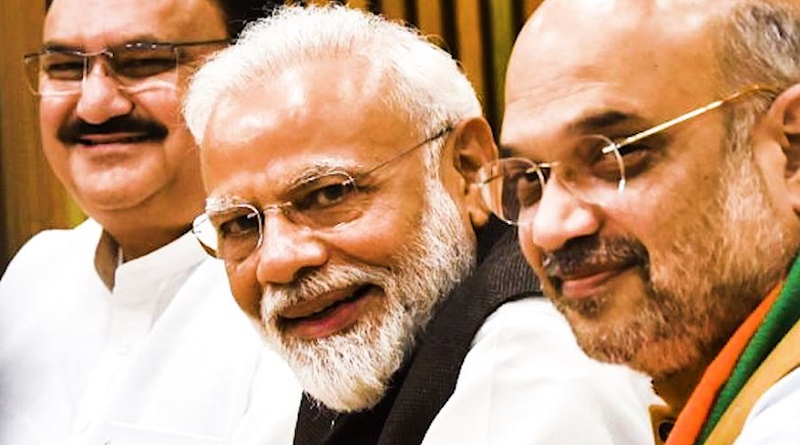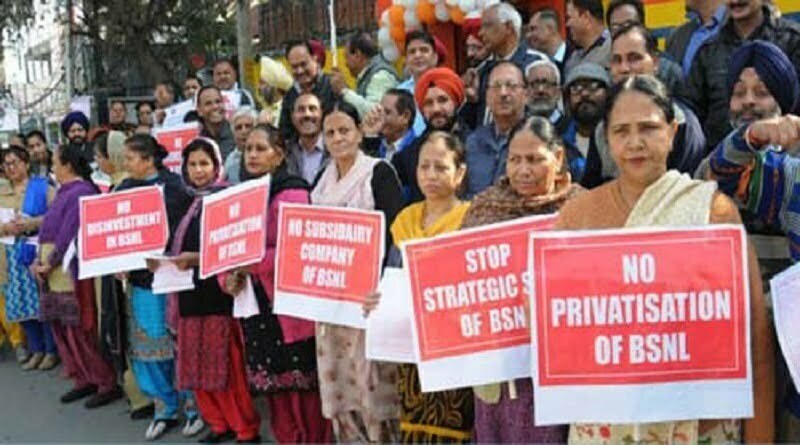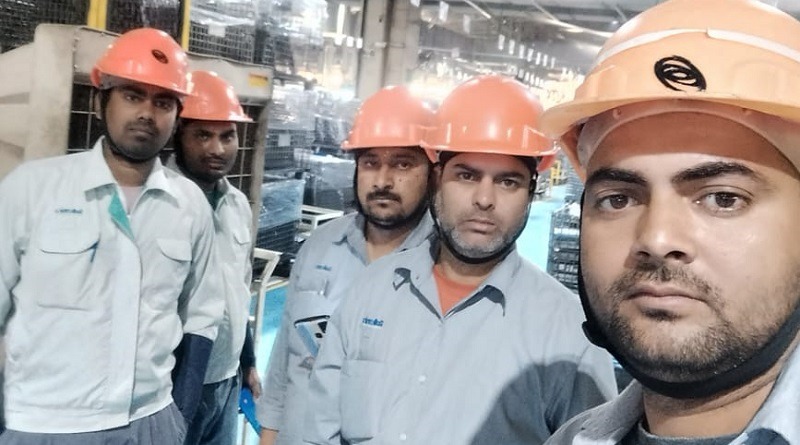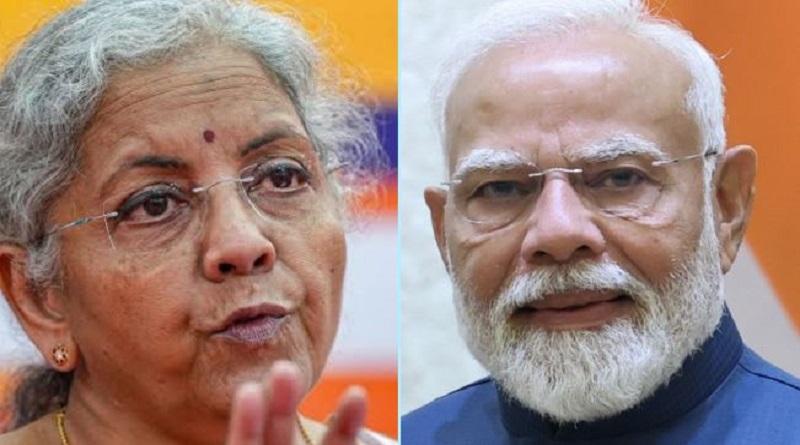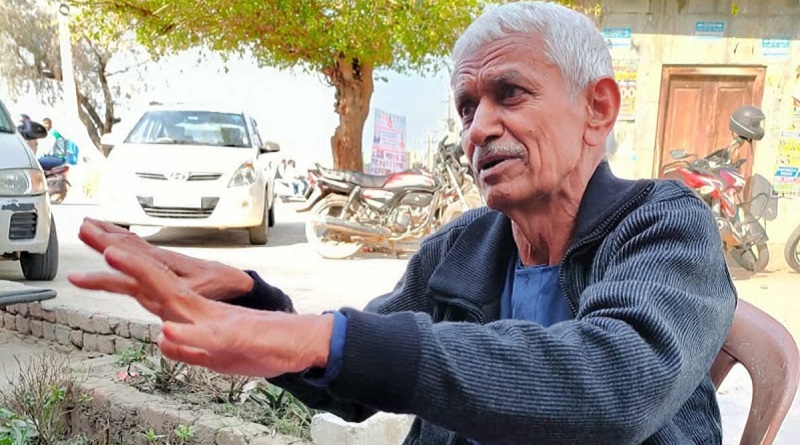Urgent need for reinventing Public Sector Undertakings

By Krishnamurthy V.
In 2021, at a time when the nation was still grappling with wave after wave of the COVID-19 pandemic, the then right-wing government had approached the private sector players for basic services such as hospitals, transportation, food and medicine distribution.
At that time, when chaos prevailed everywhere, these private sector service providers were projected as saviors for the suffering people. But, they shunned the responsibilities to their own nation.
But, when they found that they could grab the rich sick cases, they opened their hospital, hotel rooms, services and capsules, for exorbitant rates. Bills had reached Rs.15 lakhs to 25 lakhs.
The government reached the PSUs. Machinery awakened and amidst several lakh work forces landed to do public services. We had thousands of martyrs, who by contacting Covid-19 died while serving the people.
Role of PSUs
For instance, Air India air lifted and brought back thousands of Indians stuck in foreign lands. Banks opened their doors, and millions were able to meet their financial needs. Gas stations continued their services.
Many other public services continued uninterruptedly. Moreover, it was the government hospitals which pioneered in treating millions affected by the Coronavirus by setting up exclusive wards to treat Covid-19 patients.
At the same time, the ruling government got an opportunity to work towards their original agenda, which is the corporatization of the national wealth.
Hundreds of amendments were silently introduced in the form of regulations, notifications, and legislations, to further weaken the structures of whatever remained of our socialist and welfare society.
Socialism has now been declared as an inimical ideology to this nation by the finance minister of the ruling government.
Home Minister, PM in waiting, goes to Tripura and speaks, with his natural ignorance about communist and socialists powers.
People Republic of China, Nepal, Vietnam, Korea, and many socialists states are springing around the world Consequently, Indian public sector enterprises are now being served as dinner table delicacies for private corporates by the host ministries.
However, in this situation the workers have not remained silent. There have been protests, rallies, strikes and sit-ins that have rocked various industrial areas around the country.
But all major Indian medial channels and platforms have refused to cover these workers’ protests and struggles. There has been a media blackout on reportage concerning workers’ struggles everywhere in India.
Thirty years back, Bangalore was the valley of public sector enterprises. In those days, thousands of buses would move around Bangalore city in the early morning with signs that read HAL, BEL, BHEL, ITI etc.
More than one hundred organizations were transporting the workforce ranging between 80,000 to 1 lakh from their homes to factories in the morning, and back to their homes in the evening.
The city developed new townships, layouts, and human life was organized around these public sector businesses. Three decades later all of the scenario has changed.
Today, Public Sector Undertakings (PSUs) are under the threat of being killed completely. Most of their trade areas, with the exception of insurance, oil, and financial services, have already been completely captured by the private sector. This has occurred either through systematic disinvestment or by outright privatization.
As the public memory of the indispensable role played by the PSUs in the growth and development of industrialization in India is rapidly fading, there is a need for concerted efforts to once again revisit and document the origins of the PSUs, their cherished growth as the blood line of industrialization in India during its formative years after independence, and the various acts of sabotage committed against them in recent times.
Who killed this golden-egg laying goose? Today, while many PSUs are still alive and vibrant, they may not last long. With the ruling government’s collaboration several corporates are silently drawing blood from these PSUs and are becoming stronger, while simultaneously weakening the PSUs. In this ‘anti-national’ act against the PSUs, who is the accused no. 1?
History of Indian PSUs
At the time of India’s independence in 1947, all the industries were under the control of either the British or the Indian bourgeoises. Power, railways, roads, water, seaports, airports etc. were legacies left behind by the British to the Indian state.
Textiles, jute, iron ore, and many other sectors were either with the British or with Indian corporates. At the time of independence, India’s population was 36 crores, and the economy was saddled with adverse balance of payments and depleted resources.
At the time, a budget was presented for Rs.171 crores as revenue against Rs.197 crores as expenditure. Subsequently, second Five-year plan laid the foundation for industrialization of Indian sub-continent.
As we go back in time and read, we find that Directive Principles of State Policy in Constitution of India stated that “the ownership and control of the material resources are so distributed as best to subserve the common good and that the operation of the economic system does not result in the concentration of wealth and means of production to the common detriment”.
With this principle in mind, the Industrial Policy Resolution Act of 1948 was designed to achieve the following objectives:
(i) To establish a social order where justice and equality of opportunity shall be secured to all the people.
(ii) To promote the standard of living of the people.
(iii) To increase both agricultural and industrial production.
(iv) To offer employment opportunities to all.
The industries were classified into four categories:
- Industries where state had a monopoly: In this category, three fields of activity were specified – arms and ammunition, atomic energy, and rail transport.
- Mixed sector: In this category, the following six industries were specified – coal, iron and steel, aircraft manufacturing, ship building, manufacturing of telephones, telegraph, and mineral oils. New undertakings in this category were to be set up by State but existing private undertakings were allowed to continue for ten years after which the government was to review the situation and acquire any existing undertakings after paying compensation on a fair and equitable basis.
- The field of government control: Seventeen industries of national importance were included in this category.
The government did not undertake the responsibility of developing these industries but considered them of such importance that their regulation and direction was necessary.
Schedule A Industries in the Industrial Policy Resolution 1956
- Arms and ammunition and allied items of defense equipment.
- Atomic energy.
- Iron and Steel.
- Heavy castings and forgings of iron and steel.
- Heavy plants and machinery required for iron and steel production, for mining, for machine tool manufacture and for such other basic industries as may be specified by the Central Government.
- Heavy electrical plant including large hydraulic and steam turbines.
- Coal and lignite.
- Mineral oils.
- Mining iron ore, manganese ore, chrome-ore, gypsum, Sulphur, gold, and diamond.
- Mining and processing of copper, lead, zinc, tin, molybdenum, and wolfram.
- Minerals specified in the Schedule to the Atomic Energy (Control of Production and Use) Order, 1953.
- Aircraft
- Air transport.
- Railway Transport.
- Ship Building.
- Telephones and telephone cables, telegraph and wireless apparatus (excluding radio receiving sets)
- Generation and distribution of electricity
Surprisingly, major stake holding in these sectors continues to be under government, despite market reforms and policies of liberalization. One of the significant reasons for this could be the intense growth of PSUs. The private sector is now trying to acquire these PSUs, and the government wants to give them to them.
4. The field of private enterprise: All other industries were left open to the private sector. However, the State could take over any industry if its progress was unsatisfactory. In other words, failed and paralyzed private sectors were delivered to government orphanages.
The intention of the state was to protect the labor forces and productive resources by reengineering and reviving failing industries in some form. For instance, the government saved textile sectors by creating the National Textile Corporation.
Several hundred insurance companies were ailing and making losses. They were taken over by the four nationalized insurance corporations. All the failing private sector banks were merged into public sector banks. So PSUs can be seen as the lost resort for fallen angels in the private sector even today.
- Mazdoor Akrosh Rally in Delhi sends a message of uncompromised struggle of workers : Ground Report
- TUCI demands repeal of 4 labour codes, 3 day dharna at Jantar Mantar concludes

Rise of industrialization after Independence
Indian public sectors came as saviors for the Indian economy. The second Five Year Plan was an intensive experts’ draft on industrialization and manufacturing industrial growth.
Foreign financial investors and multi-nationals turned their back as Indian investments were not so profitable and were risky in an under-developed nation. Purchasing power of Indians was miserably low.
British had left the nation economically dried. Indian moneyed class and even investors did not open their vaults. Most of them were feudal in their approach.
Industrial houses in the private sector were confined to their traditional holdings, like textiles, food products, household equipment, or vehicles. 567 princely states and large land-holding zamindars were hoarding their wealth as living ghosts and continued to revel in their royal life.
Barring a handful, none of the crownless royals or their descendants wanted to contribute towards nation building. The Maharajas of Mysore were one among the few exceptions, who encouraged more industrialization and generation of power.
Banking system was a backbone
At this time, all private banks in India were cautiously averting expansion, and their loan policies were so conservative and limited to rich class. The government was not empowered to give directions to banks to address the financial agenda.
USSR (Russia) and the erstwhile socialist bloc came up as a god sent messenger for India, with their technology and investments in Indian industries and infrastructural projects. Even then, the government had to risk its own resources to create an infrastructure and to infuse capital.
Thus, capital investment in various sectors by the government gave an economic boost to the entire nation by the end of Second Pay Commission. Public sector enterprises, which are in our present times racially condemned by the right wing, were in fact the prodigious children borne out of national economic compulsions.
They created a fertile ground for thousands of ancillary enterprises and startups, through which millions of Indian work force got jobs.
Even today 60% of MSME in its startup time relied on the PSUs for ancillary part sales or supply of materials or spares from PSUs. Industrial sheds mushroomed largely because they received strong backing from the PSUs.
Residential colonies grew with expanding housing and commercial markets. Beyond that, India as a self-sustained industrial and agricultural economy, was insulated from the cyclical recessions and depressions that were devastating for the advanced countries around the world.
A forceful failure?
In the context of this history of industrialization, and the indispensable contributions of PSUs to the economic growth of independent India, today many of these PSUs have become merely reduced to high value real estate and scraps.
The failure of PSUs deserves critical scrutiny, and it is important to ask: Is it a fact that the PSUs failed because they could not cope with the growing technological revolution?
Or was there internal sabotage by labor force, by executives, by the government, and by corporates engaged in crony capitalism?
Moreover, could the failure of the PSUs also result from blackmailing and the economic colonization by the World Bank, the IMF and the WTO, and economic colonization-is the reason behind. “Doing business is not the business of the government” – after all this is a slogan by the World Bank.
Changing economic and manufacturing scenarios, with surplus international capital around the world is bound to bring a drastic change in world trade. In the west, the purchasing power is coming down due to inflation and slide in the job market. It may lead to a consumer command market.
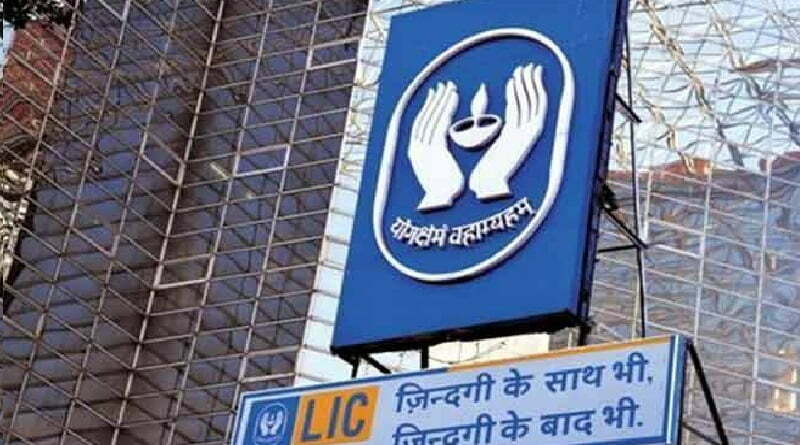
PSUs are future!
Mass productions with minimum margin was an old philosophy of PSUs may capture this market, overtaking the High Value Commodities demands. This will push back the Private corporates “Maximum Profit” ideas.
We can see them in Vaccine Serum market. We can see the China’s manufacturing success stories. We can see that Bangladesh has out beaten our textile export to Europe and USA. We read about the shrinking international trade of Western manufactured products.
The world requires a change. We India need a change with Mixed Economy policies and programme. Automatically, PSUs will spring back. Still, Indian PSU financial giants are racing with their competitors.
Many of our friends have gone through the phases of growth and falling state of PSUs. Whatever the RIGHT WINGS and MNCs claims are, Indian PSUs are capable of rising from the fire as Phoenix bird.
We will debate about that. Our PSU friends shall reinvent a spirit of revival. It is our inexperienced road. We lay that and move ahead.
A living left wing principle would need to constantly reinvent itself through creative dissidence. Otherwise, people will abdicate them soon.
(Krishnamurthy V. is a retired banker from Bangalore and has extensively worked with bank employee unions and other Karnataka based movements. Editorial assistance for publishing his article was given by Riddhi from Workers Unity.)
Subscribe to support Workers Unity – Click Here
(Workers can follow Unity’s Facebook, Twitter and YouTube. Click here to subscribe to the Telegram channel. Download the app for easy and direct reading on mobile.)

